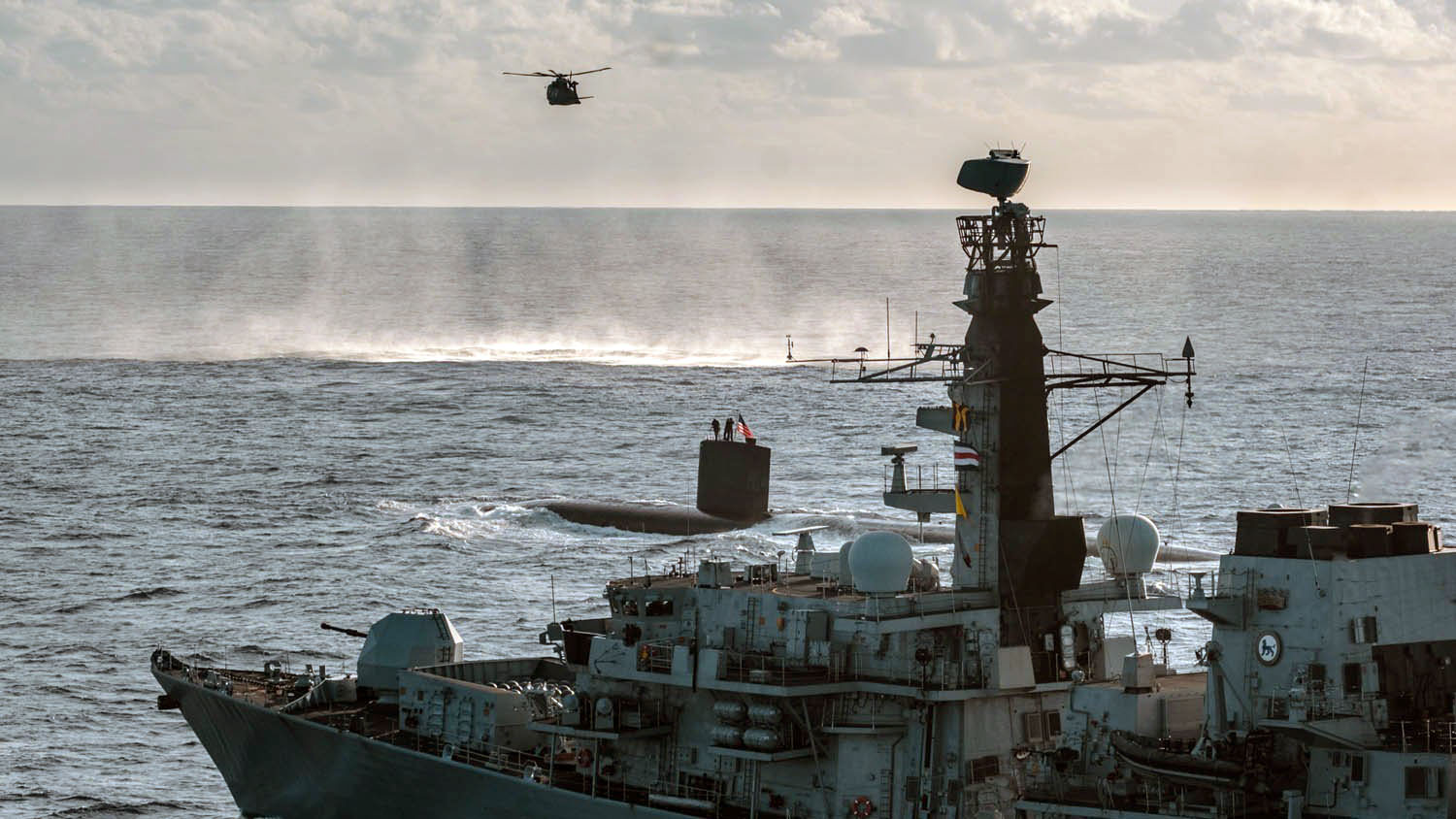Breaking news
Merlin helicopters to form strike group with HMS Queen Elizabeth and HMS Northumberland.
The Navy’s premier submarine hunters are much better prepared to defend Britain’s future flagships after a three-month workout in the USA. Merlin helicopters of 814 and 820 Naval Air Squadrons – based at RNAS Culdrose – joined new carrier HMS Queen Elizabeth and the frigate HMS Northumberland to form an invisible, impenetrable ring of steel around the task group on its deployment to the USA.
 Merlin, Los Angeles class and HMS Northumberland (Picture source: Royal Navy)
Merlin, Los Angeles class and HMS Northumberland (Picture source: Royal Navy)
It’s the mission of the helicopters – plus a dedicated submarine-hunting frigate – to prevent any underwater threat getting within torpedo or missile range.
A series of anti-submarine exercises – firstly a Canadian-led NATO workout off Nova Scotia, then against American Los Angeles-class hunter-killers off the Eastern Seaboard of the USA – allowed sailors and aircrew to help develop the tactics and routines needed to defeat the latest boats.
“The Los Angeles class are fast, agile and able to stay submerged as long as the food lasts – the perfect adversary to train against,” said pilot Lieutenant Nick Jackson-Spence.
Aircrewman Petty Officer Andrew ‘Smudge’ Smith – who helps operate the sub-hunting sensor suite in the back of a Merlin – said the American boats proved to be formidable ‘foes’.
“The US submarines are experts in using the underwater environment to their advantage – they live underwater, we only visit,” he added.
“We had to draw on our training to counter them. Each sortie takes a lot of preparation and planning, but after every flight, we learn a little more; helping us to keep the carrier safe.”
The submarine threat is the greatest faced by a carrier strike group believes 820 Squadron’s senior pilot Lieutenant Commander Robert Bond, who commanded the detachment aboard HMS Queen Elizabeth.
“The deployment gave us the opportunity to develop our anti-submarine warfare ability, building a foundation which we’ll continue to hone throughout 2020,” he said.
“We’ll be ready for the carrier’s first operational deployment in 2021 and relish the opportunity to help make it a success.”
His men and women returned to Cornwall with fresh ideas and fresh tactics – anything from storing extra sonobuoys (the electronic ‘ears’ dropped in the ocean to listen for submarine activity) to relief aircrew living aboard the escorting frigate to keep the pressure on the enemy below.
That pressure demands supreme efforts – and not just from the four crew in the helicopter; for every hour in the air, a Merlin Mk2 requires 60 hours of maintenance in the carrier’s cavernous hangar, work performed by a 60-strong team of engineers, technicians, and avionics experts on Queen Elizabeth.
Aboard HMS Northumberland, the maintenance burden was carried by just ten mechanics. They put in more than 9,000 hours – individually more than one year’s work – to support more than 50 sorties by the frigate’s Merlin.
“Northumberland were really welcoming to us,” said avionics expert Leading Air Engineering Technician Katherine Jennings.
“During busy periods we could work hours which took us out of the ship’s routine and everyone did their upmost to keep us going, especially the chefs who kindly kept us well fed!”
The helicopter’s observer Lieutenant Luke Maciejewski said working hand-in-hand with the frigate – equipped with state-of-the-art sonar and a dedicated team of submarine-hunting specialists in the operations room – created a potent combination.
“Living with the people you operate with really helps form relationships which make you a more effective fighting team,” he added. “This ultimately makes Northumberland – in fact, any anti-submarine frigate – a more potent asset when seamlessly working with her own helicopter.”


























